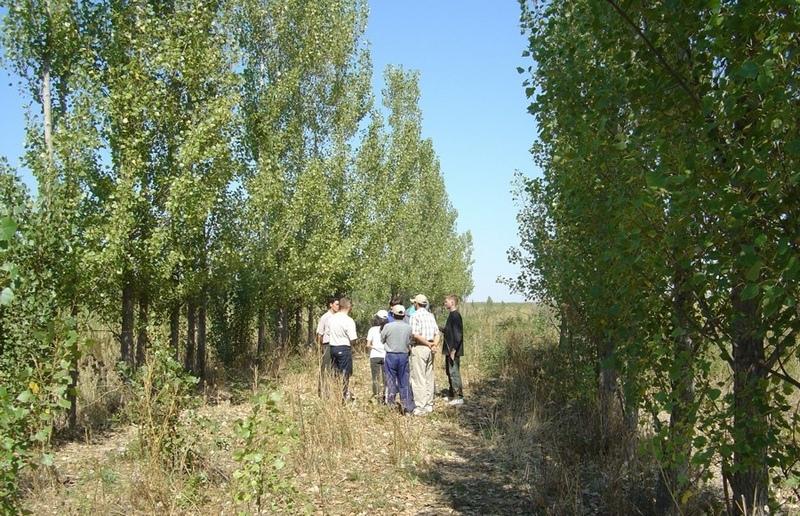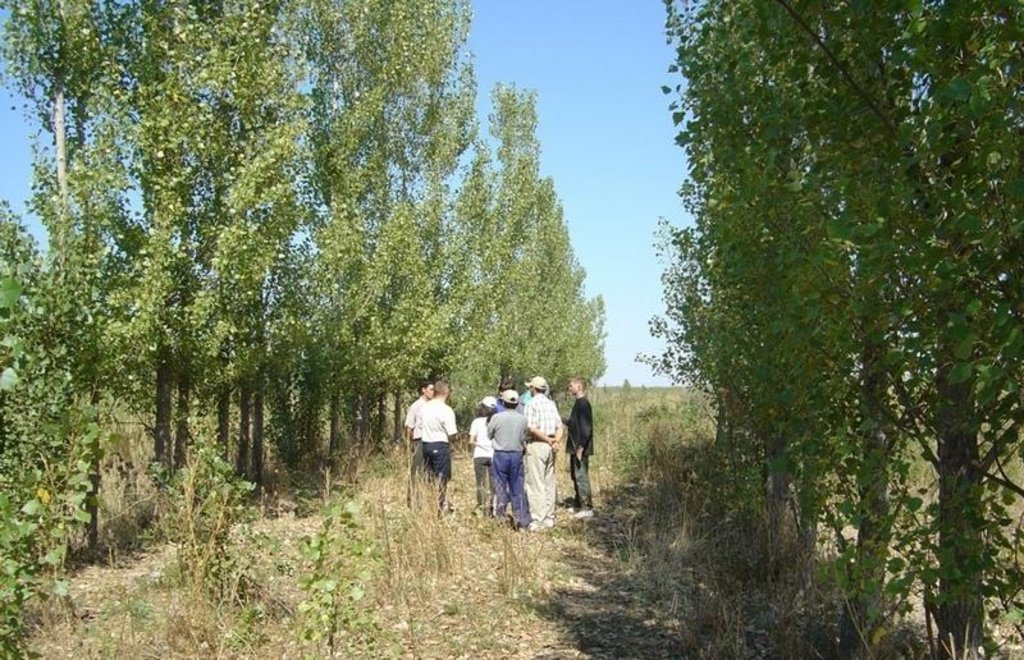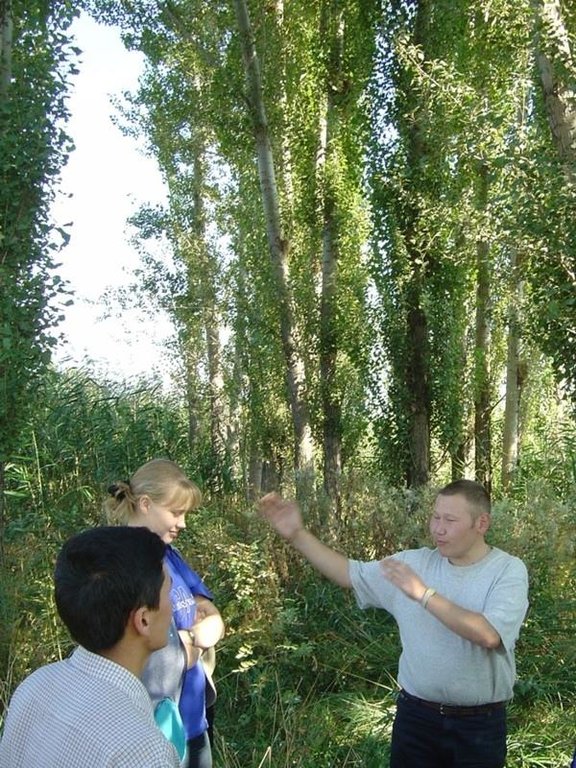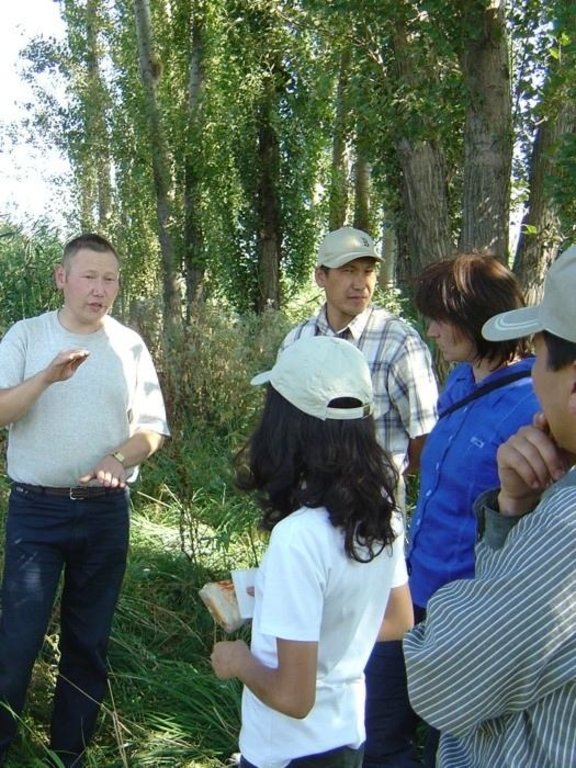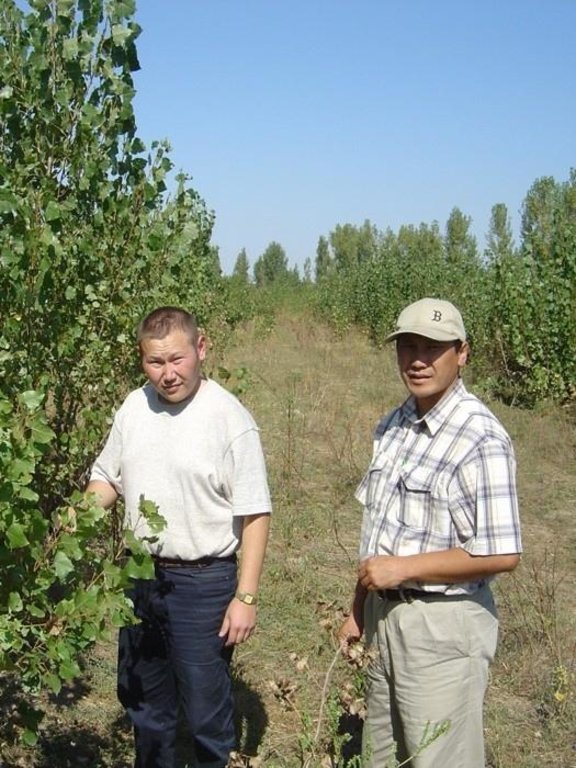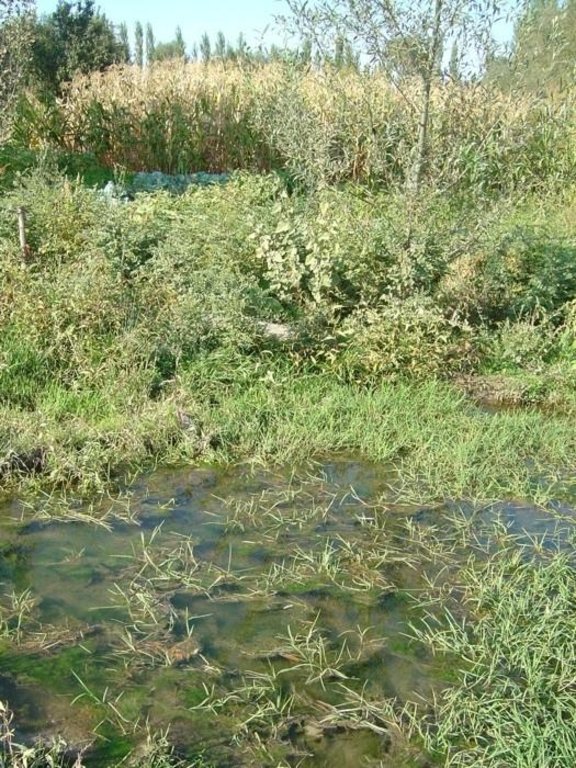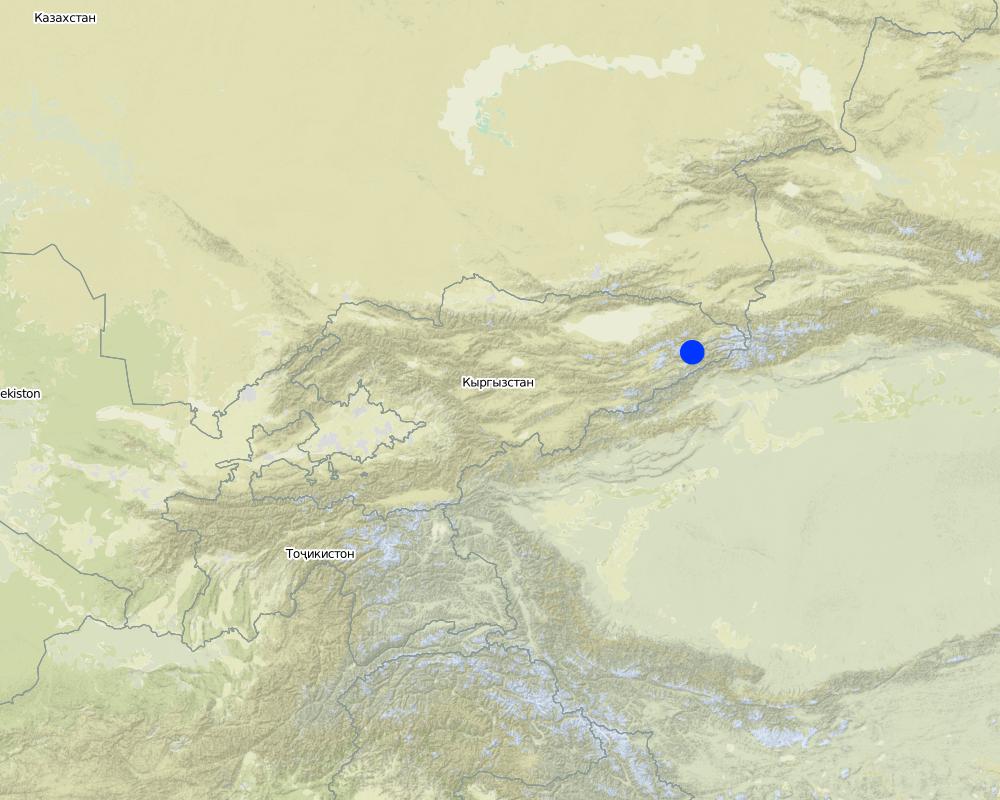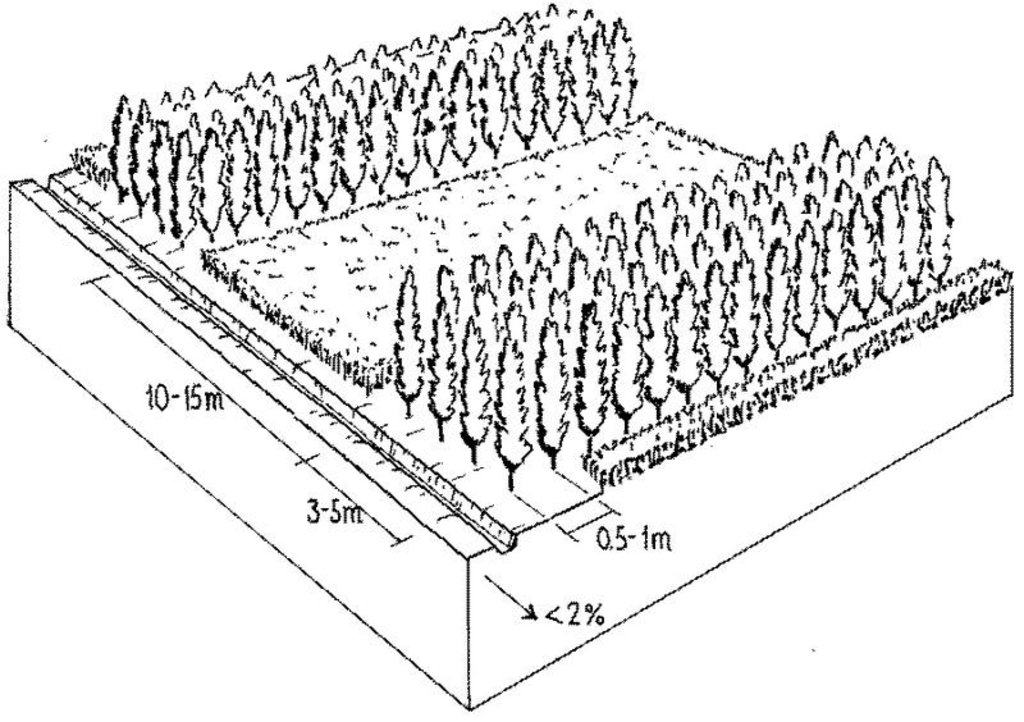Poplar trees for bio-drainage [قرغيزستان]
- تاريخ الإنشاء:
- تحديث:
- جامع المعلومات: Abdybek Asanaliev
- المحرر: –
- المراجعون: David Streiff, Deborah Niggli, Alexandra Gavilano
bio-drainage, reduce salinity, favourable microclimate for for plant growth
technologies_1098 - قرغيزستان
عرض الأقسام
توسيع الكل طي الكل1. معلومات عامة
1.2 تفاصيل الاتصال بالأشخاص الرئيسيين لمصدر المعلومات والمؤسسات المشاركة في تقييم وتوثيق التقنية
متخصص في الإدارة المستدامة للأراضي:
اسم المشروع الذي سهّل توثيق/تقييم التقنية (إذا كان ذلك على صلة)
Book project: where the land is greener - Case Studies and Analysis of Soil and Water Conservation Initiatives Worldwide (where the land is greener)اسم المؤسسة (المؤسسات) التي سهلت توثيق/تقييم التقنية (إذا كان ذلك على صلة)
Kyrgyz Agrarian University (Kyrgyz Agrarian University) - قرغيزستان1.3 الشروط المتعلقة باستخدام البيانات الموثقة من خلال WOCAT
يوافق جامع المعلومات والشخص (لاشخاص) الرئيسي لمصدر المعلومات على الشروط المتعلقة باستخدام البيانات الموثقة من خلال WOCAT:
نعم
2. وصف تقنيةالإدارة المستدامي للأراضي
2.1 وصف مختصر للتقنية
تعريف التقنية:
Poplars planted to lower the ground water table and reduce salinity where irrigation drainage systems have broken down; lucerne cultivated between the tree lines.
2.2 وصف تفصيلي للتقنية
الوصف:
In irrigated areas of Central Asia, the drainage system introduced during soviet times has broken down due to lack of maintenance. As a result, water tables have been rising and soil salinity increasing. In the Chui Valley, which is the main crop production area in Kyrgyzstan, approximately 90% of the cultivated land is irrigated for wheat, maize, sugar beet, lucerne and vegetables. Of this, approximately one third (ca. 320,000 ha) is degraded due to loss of fertility, salinisation and waterlogging.
The individual initiative described here - poplar planting - has been applied on a degraded plain (about 400 m a.s.l.), under semi-arid conditions on a plot of 5 hectares. Though initially planted for timber, an important side effect was noted by the farmer in question. Poplar trees, well known for their tolerance to waterlogging and salinity, provide ‘bio-drainage’. Excess water is rapidly taken up by the root system and transpired through the dense foliage. Within the plantation the humidity level of the lower layers of air is increased, thus reducing the influence of the dry, hot winds. A more favourable microclimate for plant growth is thus created. Simultaneously the original purpose of planting - to obtain cheap timber and firewood - is achieved through the rapid growth of the trees: there is a severe shortage of wood locally.
The varieties used include the local Populus alba and Populus nigra as well as a hybrid from Kazakhstan, P. pyramidalis. The trees are planted in rows about 5 metres wide, separated by 10-15 metre strips planted with Medicago sativa (lucerne) and Bromus inermis (a grass), both of which are grown for hay (see technical drawing). Around 3,000 saplings are needed per hectare. The young poplars require irrigating during the first year before their roots can reach the water table. The trees are weeded and their lower branches pruned to encourage straight and fast growth. They are thinned twice before they are 14 years old: these thinnings can be sold. The poplars then remain until they are 20-25 years old and suitable for felling. The output of commercial timber of a poplar plantation is 3,000 m2 per hectare (1 m2 per mature tree). Slow-growing/sick trees, as well as pruned branches, are used as firewood - which can amount to 20-30 m3 per hectare. The cycle begins again after approximately 10 years, when new saplings are planted between the existing, thinned, lines of poplars. Desalinisation of the soil takes 10 years or a little longer, when it again becomes suitable for irrigated cereal cropping.
2.3 صور التقنية
2.5 البلد/المنطقة/المواقع التي تم تنفيذ التقنية فيها والتي يغطيها هذا التقييم
البلد:
قرغيزستان
المنطقة/الولاية/المحافظة:
Besh-Terek, Chui valley,
حدد انتشار التقنية:
- منتشرة بالتساوي على مساحة
إذا كانت التقنيةا موزعة بالتساوي على منطقة ما، حدد المساحة المغطاة (بالكيلومتر المربع):
0,05
التعليقات:
Total area covered by the SLM Technology is 0.05 km2.
Map
×2.7 إدخال التقنية
حدد كيف تم إدخال التقنية:
- أثناء التجارب/الأبحاث
3. تصنيف تقنية الإدارة المستدامي للأراضي
3.1 الغرض الرئيسي ( الأغراض الرئيسية) للتقنية
- الحد من تدهور الأراضي ومنعه وعكسه
3.2 نوع (أنواع) استخدام الأراضي الحالية حيث يتم تطبيق التقنية
استخدامات الأراضي مختلطة ضمن نفس وحدة الأرض:
نعم
حدد استخدام الأراضي المختلطة (المحاصيل / الرعي / الأشجار):
- الحراجة الزراعية

الأراضي الزراعية
- زراعة سنوية
الزراعة السنوية - حدد المحاصيل:
- محاصيل الأعلاف - البرسيم (الفصة)
عدد مواسم الزراعة في السنة:
- 1
حدد:
Longest growing period in days: 180; Longest growing period from month to month: Mar - Sep

الغابات/ الأراضي الحرجية
نوع الشجرة:
- أنواع الحور
التعليقات:
Major food crop: Poplar, lucerne (alfalfa), wheat
Major land use problems (compiler’s opinion): Irrigation drainage systems have deteriorated (silted up, choked with weeds and reeds) due to lack of maintenance. This has led to a raised water table, waterlogging and increased salinity, thus seriously affecting productivity and making cultivation of some crops impossible. Farmers’ incomes have significantly reduced as a result.
Constraints of wastelands / deserts / glaciers / swamps
3.5 مجموعةالإدارة المستدامة للأراضي التي تنتمي إليها هذه التقنية
- إدارة مزارع الغابات
- تحسين الغطاء الأرضي/النباتي
3.6 التدابير التقنية في مجال إلادارة المستدامة للأراضي

التدابير الزراعية
- A1: الغطاء النباتي/التربة

التدابير النباتية
- V1: غطاء من الأشجار والشجيرات
التعليقات:
Type of agronomic measures: legume inter-planting
Type of vegetative measures: aligned: -against wind
3.7 الأنواع الرئيسية من تدهور الأراضي التي تناولتها التقنية

التدهور الكيميائي للتربة
- (Cn): تراجع الخصوبة وانخفاض محتوى المادة العضوية (غير ناتج عن الانجراف)
- (Cs): التملح/ القلونة

التدهور المادي أو الفيزيائي للتربة
- (Pw): تشبع التربة بالمياه
التعليقات:
Secondary types of degradation addressed: Cn: fertility decline and reduced organic matter content
3.8 منع أو حد أو عكس تدهور الأراضي
تحديد هدف التقنية فيما يتعلق بتدهور الأراضي:
- اصلاح/إعادة تأهيل الأراضي المتدهورة بشدة
4. المواصفات الفنية، وأنشطة التنفيذ، والمدخلات، والتكاليف
4.1 الرسم الفني للتقنية
المواصفات الفنية (المتعلقة بالرسم الفني):
Alternating strips of poplar trees for bio-drainage, and lucerne for fodder. Drainage channels (left) are spaced at 50 metres apart.
Technical knowledge required for field staff / advisors: moderate
Technical knowledge required for land users: moderate
Main technical functions: lower ground water level, decrease waterlogging & improve soil fertility, reduce risk of salinisation
Secondary technical functions: reduction in wind speed, increased air humidity & cooling effect
Aligned: -against wind
Vegetative material: T : trees / shrubs
Trees/ shrubs species: Poplars (Populus alba, Populus nigra, P.pyramidalis)
المؤلف:
Mats Gurtner
4.2 معلومات عامة بخصوص حساب المدخلات والتكاليف
حدد العملة المستخدمة لحساب التكاليف:
- دولار أمريكي USD
4.3 أنشطة التأسيس
| النشاط | التوقيت (الموسم) | |
|---|---|---|
| 1. | Set up tree nursery one year before planting: take cuttings about | |
| 2. | Demarcate lines in field. | |
| 3. | Dig drainage trenches in the marshy area (50 cm deep, 50 cm wide, | (end of summer, early autumn) |
| 4. | Plough where seedlings of the poplars are to be planted. | |
| 5. | Transplant tree seedlings from the nursery to the field . | in spring |
| 6. | Irrigate the seedlings by furrow for one year. | |
| 7. | Protect the area from animals. | |
| 8. | Plant lucerne . | in first year after planting of poplars |
4.4 التكاليف والمدخلات اللازمة للتأسيس
| تحديد المدخلات | الوحدة | الكمية | التكاليف لكل وحدة | إجمالي التكاليف لكل مدخل | % من التكاليف التي يتحملها مستخدمو الأراضي | |
|---|---|---|---|---|---|---|
| العمالة | All the Labour | ha | 1,0 | 350,0 | 350,0 | 100,0 |
| العمالة | Machine use | ha | 1,0 | 100,0 | 100,0 | 100,0 |
| العمالة | Animal traction | ha | 1,0 | 5,0 | 5,0 | 100,0 |
| معدات | Tools | ha | 1,0 | 15,0 | 15,0 | |
| المواد النباتية | Seeds | ha | 1,0 | 20,0 | 20,0 | 1,0 |
| المواد النباتية | Seedlings | ha | 1,0 | 350,0 | 350,0 | 1,0 |
| المواد النباتية | Nursery | ha | 1,0 | 80,0 | 80,0 | 1,0 |
| إجمالي تكاليف إنشاء التقنية | 920,0 | |||||
| إجمالي تكاليف إنشاء التقنية بالدولار الأمريكي | 920,0 | |||||
التعليقات:
Duration of establishment phase: 24 month(s)
4.5 الصيانة/الأنشطة المتكررة
| النشاط | التوقيت/الوتيرة | |
|---|---|---|
| 1. | Prune lower branches of the trees to encourage tall and straight | |
| 2. | Continue protection of the plot (because of lucerne). | |
| 3. | Cut lucerne for hay . | /4 times per year |
| 4. | Weed control (main weeds are Chenopodium album, |
4.6 التكاليف والمدخلات اللازمة للصيانة/للأنشطة المتكررة (سنويًا)
| تحديد المدخلات | الوحدة | الكمية | التكاليف لكل وحدة | إجمالي التكاليف لكل مدخل | % من التكاليف التي يتحملها مستخدمو الأراضي | |
|---|---|---|---|---|---|---|
| العمالة | All the labour | ha | 1,0 | 25,0 | 25,0 | 100,0 |
| معدات | Machine use | ha | 1,0 | 5,0 | 5,0 | 100,0 |
| إجمالي تكاليف صيانة التقنية | 30,0 | |||||
| إجمالي تكاليف صيانة التقنية بالدولار الأمريكي | 30,0 | |||||
التعليقات:
Machinery/ tools: shovel, axe, saw
Labour for establishment and maintenance are provided by the farmer and his family. After 10–15 years trees are
thinned for timber and the cycle begins again – with reduced establishment costs: new saplings are planted between the
existing, thinned, lines of poplars. On two sides the plot is protected by a drainage ditch and a concrete canal protect the plot respectively. Furthermore, there is an agreement with the neighbours not to let the animals graze the lucerne. However after the last cut of lucerne animals are allowed to graze the plot.
5. البيئة الطبيعية والبشرية
5.1 المناخ
هطول الأمطار السنوي
- < 250 مم
- 251- 500 ملم
- 501 - 750ملم
- 1,000-751 ملم
- 1,500-1,100 ملم
- 2,000-1,500 ملم
- 3,000-2,001 ملم
- 4,000-3,100 ملم
- > 4000 ملم
المنطقة المناخية الزراعية
- شبه قاحلة
5.2 طوبوغرافيا
متوسط الانحدارات:
- مسطح (0-2%)
- بسيط (3-5%)
- معتدل (6-10%)
- متدحرج (11-15%)
- تلال (16-30%)
- شديدة الانحدار(31-60%)
- فائقة الانحدار (>60%)
التضاريس:
- هضاب/سهول
- أثلام مرتفعة
- المنحدرات الجبلية
- منحدرات التلال
- منحدرات في السفوح
- قاع الوادي
المنطقة الارتفاعية:
- 100-0 متر فوق سطح البحر
- 500-101 متر فوق سطح البحر
- 1,000-501 متر فوق سطح البحر
- 1,500-1,001 متر فوق سطح البحر
- 2,000-1,501 متر فوق سطح البحر
- 2,500-2,100 متر فوق سطح البحر
- 3,000-2,501 متر فوق سطح البحر
- 4,000-3,001 متر فوق سطح البحر
- > 4000 متر فوق سطح البحر
5.3 التربة
متوسط عمق التربة:
- ضحل جدًا (0-20 سم)
- ضحلة (21-50 سم)
- متوسطة العمق (51-80 سم)
- عميقة (81-120 سم)
- عميقة جدًا (> 120 سم)
قوام التربة (التربة السطحية):
- متوسط ( طميي، سلتي)
المواد العضوية في التربة السطحية:
- متوسطة (1-3%)
إذا كان متاحًا، قم بإرفاق وصف كامل للتربة أو تحديد المعلومات المتوفرة، على سبيل المثال نوع التربة، الرقم الهيدروجيني/ درجة حموضة التربة، قدرة التبادل الكاتيوني، النيتروجين، الملوحة وما إلى ذلك.
Soil fertility is very low - low
Soil drainage / infiltration is poor
5.6 خصائص مستخدمي الأراضي الذين يطبقون التقنية
التوجه السوقي لنظام الإنتاج:
- الكفاف (الإمداد الذاتي)
- تجاري/سوق
الدخل من خارج المزرعة:
- 10-50% من جميع الإيرادات
اذكر الخصائص الأخرى ذات الصلة لمستخدمي الأراضي:
Off-farm income specification: this individual is an employee of the regional agricultural department and has a small business
Market orientation of production system: Thinned poplar saplings, timber and firewood from prunings for market
5.7 متوسط مساحة الأرض التي يستخدمها مستخدمو الأراضي الذين يطبقون التقنية
- < 0.5 هكتارا
- 0.5 - 1 هكتار
- 1 -2 هكتار
- 2 - 5 هكتار
- 5 - 15 هكتار
- 15 - 50 هكتار
- 50 - 100هكتار
- 500-100 هكتار
- 1,000-500 هكتار
- 10,000-1,000 هكتار
- > 10,000 هكتار
5.8 ملكية الأراضي، وحقوق استخدام الأراضي، وحقوق استخدام المياه
ملكية الارض:
- فردية، يوجد سند ملكية
حقوق استخدام الأراضي:
- فردي
6. الآثار والتصريحات الختامية
6.1 الآثار التي أظهرتها التقنية في الموقع
الآثار الاجتماعية والاقتصادية
الإنتاج
إنتاج الأعلاف
التعليقات/ حدد:
Lucerne between tree lines
جودة العلف
التعليقات/ حدد:
Lucerne between tree lines
إنتاج الخشب
الدخل والتكاليف
دخل المزرعة
عبء العمل
آثار اجتماعية واقتصادية أخرى
input contstraints
التعليقات/ حدد:
Not all the farmers have enough resources for introduction of this technology (equipment,
main benefit
التعليقات/ حدد:
However, short-term benefit from lucerne as fodder and from firewood through pruning
الآثار الاجتماعية والثقافية
المعرفة بالإدارة المستدامة للأراضي/تدهور الأراضي
الآثار الايكولوجية
دورة المياه / الجريان السطحي
تصريف المياه الزائدة
التربة
رطوبة التربة
الحد من مخاطر المناخ والكوارث
خطر الحريق
سرعة الرياح
الآثار الايكولوجية الأخرى
soil fertility
التعليقات/ حدد:
Due to lucerne: 100–130 kg of N
biodiversity
6.2 الآثار التي أظهرتها التقنية خارج الموقع
الرواسب المنقولة بواسطة الرياح
General drop of water table
6.4 تحليل التكلفة والعائد
كيف يمكن مقارنة العوائد نسبة لتكاليف الإنشاء (من وجهة نظر مستخدمي الأراضي)؟
عوائد قصيرة الأجل:
سلبي
عوائد طويلة الأجل:
ايجابي جدا
كيف تتم مقارنة العوائدمع كلفة الصيانة/التكاليف المتكررة (من وجهة نظر مستخدمي الأراضي)؟
عوائد قصيرة الأجل:
إيجابي
عوائد طويلة الأجل:
ايجابي جدا
6.5 اعتماد التقنية
- حالات فردية/تجريبية
إذا كان متاحًا، قم بتحديد الكمية (عدد الأسر المعيشية و/أو المساحةالمغطاة):
1 household
من بين جميع الذين تبنوا التقنية، كم عدد الذين فعلوا ذلك بشكل تلقائي، أي دون تلقي أي حوافز مادية/مدفوعات؟:
- 10-0%
التعليقات:
There is a little trend towards spontaneous adoption of the Technology
Comments on adoption trend: A single farmer has developed this technology. It should be possible to spread the technology among other farmers but financial support (eg interest-free credit) will need to be provided. A recent assessment has showed that there is growing interest in the system by farmers in the region. Additionally, in the lower Yanvan Valley of Tajikistan, a similar bio-drainage system has been described - using poplars and mulberry trees. In that situation wheat is planted in association with the trees.
6.7 نقاط القوة / المزايا / الفرص التي توفرها التقنية
| نقاط القوة/ المزايا/ الفرص من وجهة نظر جامع المعلومات أو غيره من الاشخاص الرئيسيين لمصدر المعلومات |
|---|
|
Positive ecological effect: salinity and area of marshy land can be reduced and waterlogged soils reclaimed How can they be sustained / enhanced? Awareness raising and training of farmers to show the effect of poplar trees on reduction of waterlogging and salinisation. |
|
Rapid benefit through the production of lucerne and grass. Long-term production of valuable firewood and timber (both are in short supply) How can they be sustained / enhanced? Show the economic benefits of additional lucerne production and timber and firewood; demonstrate marketing opportunities. |
6.8 نقاط ضعف / مساوىء / مخاطر التقنية وسبل التغلب عليها
| نقاط الضعف/ المساوىء/ المخاطر من وجهة نظر جامع المعلومات أو غيره من الاشخاص الرئيسيين لمصدر المعلومات | كيف يمكن التغلب عليها؟ |
|---|---|
| The implementation of the technology is not possible for all land users due to input and labour constraints |
Financial support, better organisation/ share of equipment. |
| Major benefit from timber production comes only after 25 years |
Create awareness about additional short-term benefits, especially firewood and fodder, as well as the long-term effects and the sustainability of the system. |
|
Cannot be replicated by all farmers in the valley at the same density as the market for trees (timber, firewood) will be saturated, and trees can never completely take the place of irrigated food crops: nevertheless the benefits will extend to those growers through the drainage function of the poplars |
A new overall production system will have to be worked out for the region. |
|
The case reported here works in its current design because of its isolated ‘island effect’: if more farmer grew poplar, the same bio-drainage effect could be achieved over the whole valley at a lower density of trees per unit area, implying a larger proportion of cultivable land. |
7. المراجع والروابط
7.1 طرق جمع/مصادر المعلومات
7.2 المراجع للمنشورات المتاحة
العنوان، المؤلف، السنة، النظام القياسي الدولي لترقيم الكتب ISBN:
Budaychiev D (2002) The prospects for hybrid poplar forest plantations. Resolving problems and the strategy of reformingagrarian science. News of Kyrgyz Agrarian Academy Vol. 2, Issue 3, 4.1 Bishkek
الروابط والوحدات المواضيعية
توسيع الكل طي الكلالروابط
لا يوجد روابط
الوحدات المواضيعية
لا يوجد وحدات مواضيعية


